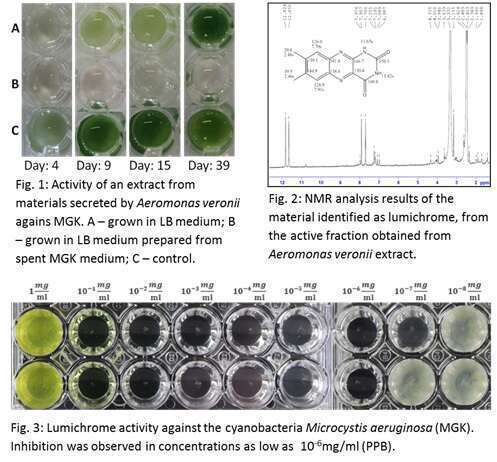
A DIALOG BETWEEN BACTERIA AND THE INTERACTION WITH MICROCYSTIS AS A MEAN TO EXTERMINATE TOXIC CYANOBACTERIA BLOOMS
2School of Chemistry, Raymond and Beverly Sackler Faculty of Exact Sciences, Tel Aviv University, Tel Aviv
Microcystis.sp are key players in the global phenomenon of toxic cyanobacteria blooms, that harm water quality in fresh water bodies, up to the level where it poses a danger to humans, livestock, fish and even crops. As such, they are the subject of extensive research for the past few decades, but in spite of the vast knowledge collected, there is even more that remains unknown. In this research we study the interaction between different strains of bacteria isolated from scum samples of a Microcystis.sp bloom in Lake Kinneret and a culture of Microcystis aeruginosa (MGK) collected from Lake Kinneret, using quorum sensing systems and other means. Out of the strains isolated, it was found that Aeromonas veronii (100% similarity in 16s) has activity against MGK. The potency and duration were significantly increased when Aeromonas veronii was pre exposed to MGK, by growing in a medium prepared from a filtrate of stationary MGK culture (fig. 1). From the Aeromonas veronii extract we produced, after several separations, an active fraction in an amount and purity level sufficient for NMR analysis. One of the materials present was identified as lumichrome (fig. 2). Testing the activity of lumichrome against MGK showed inhibition in concentration levels as low as 10-6mg/ml (PPB) (fig. 3).
These results suggest a complex interaction between Microcystis.sp and bacteria in their surroundings. A deeper understanding of this interaction could provide the means to predict, exterminate, and even prevent toxic cyanobacteria blooms.

Powered by Eventact EMS